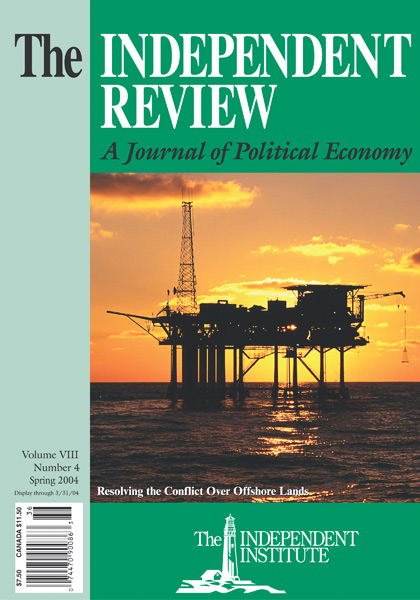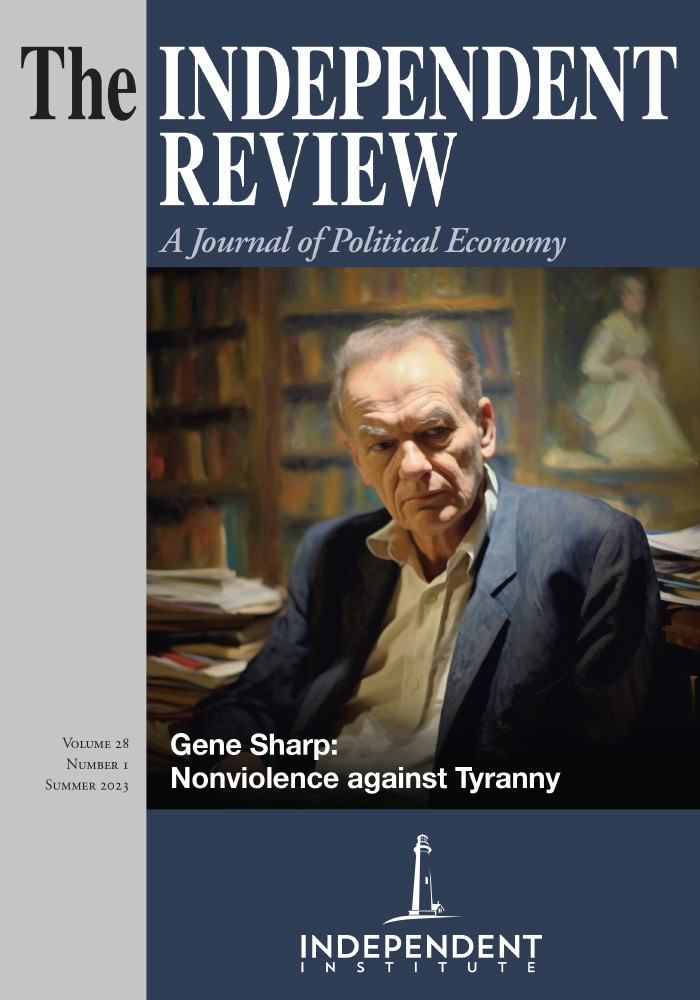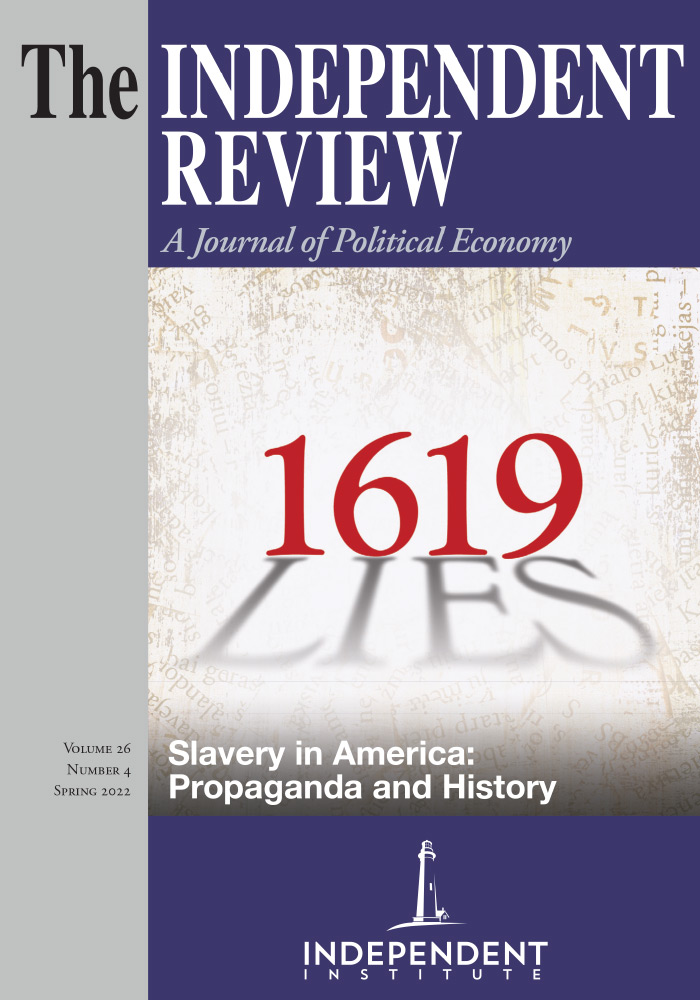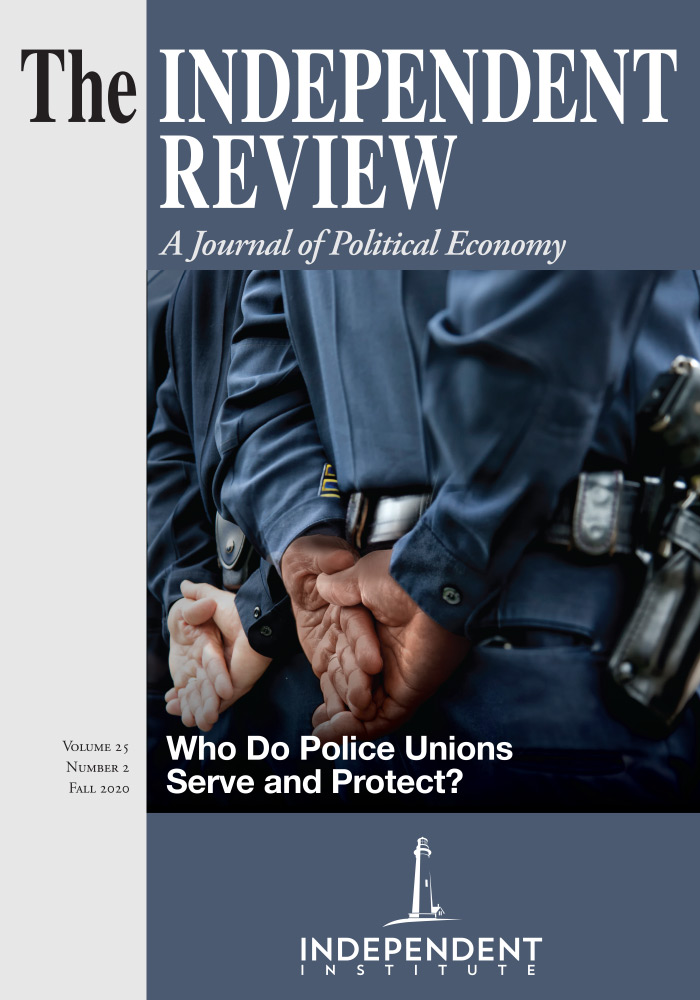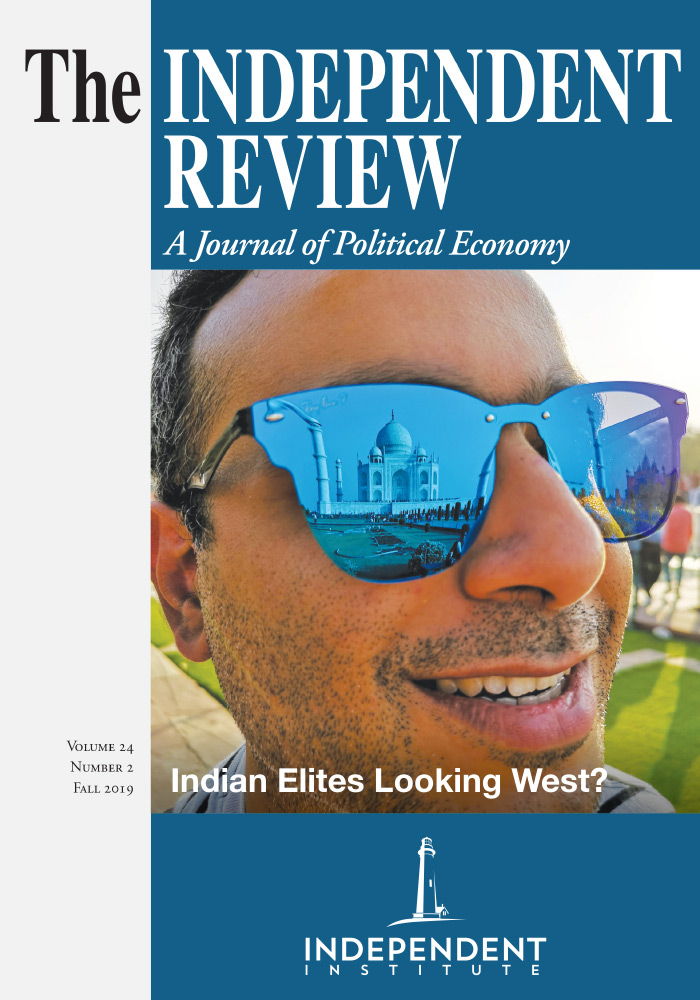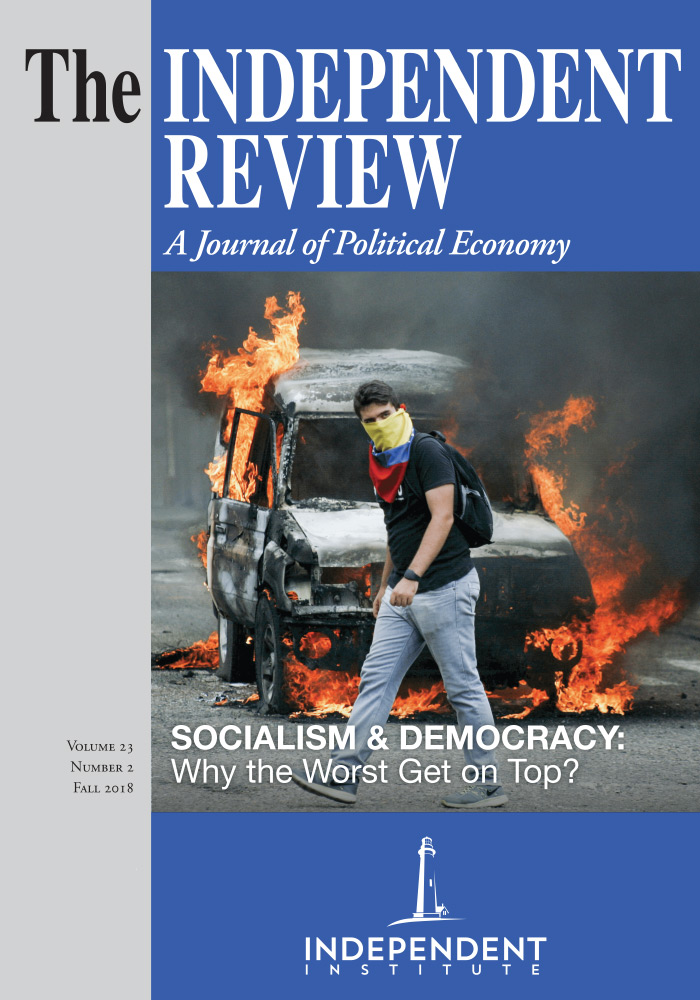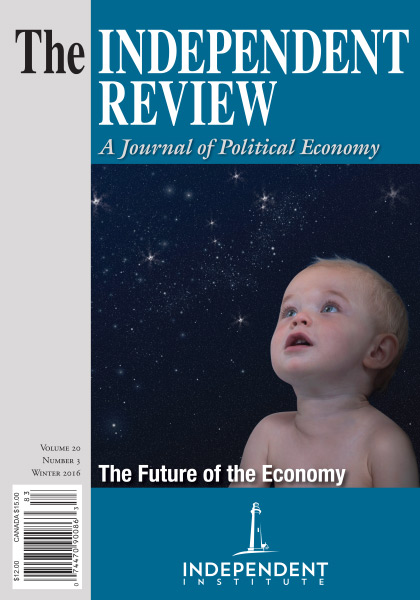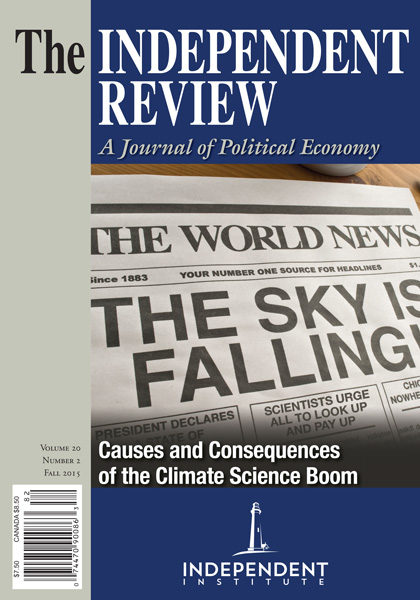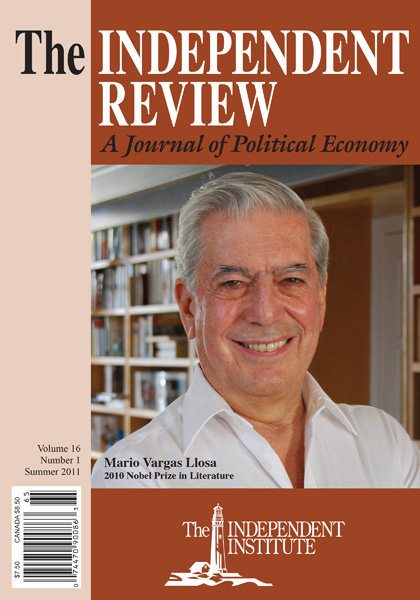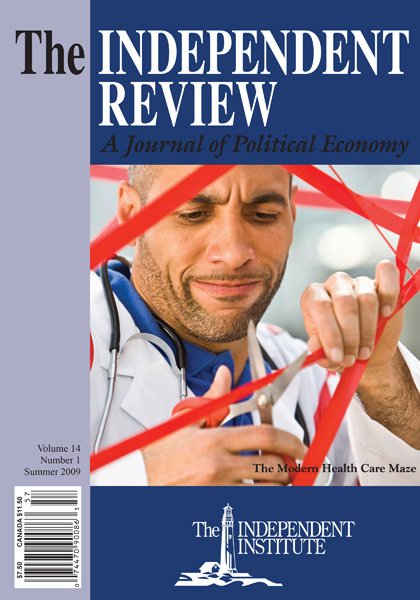Many of the problems facing the unemployment compensation system in the United States can be solved with an alternative system of individual unemployment accounts. IUAs would give the unemployed greater financial security, flexibility, and incentive to search for work; remove the current system’s inadvertent encouragement of layoffs; and promote savings and economic growth.
Article
The unemployment compensation system in the United States is out of date and in trouble. The system has four fundamental problems: (1) during recessions, it often cannot meet its financial obligations without federal aid or deficit spending; (2) it is out of step with the structural and cultural realities of the modern workforce; (3) it encourages layoffs and unemployment; and (4) it operates in isolation from other programs related to employment and financial security. We propose an alternative unemployment policy based on the individual unemployment account (IUA). The IUA would be a mandatory and portable individual trust to which the employer and employee contributed. It shifts control and responsibility from the employer and the state government to the employer and the employee, and it is compatible with the realities of a twenty-first-century economy. We begin by providing an overview of how the current unemployment insurance system works and discussing its problems. We then describe an alternative unemployment policy based on IUAs and discuss the benefits of such a policy.
The Current Unemployment Insurance Compensation System
The current unemployment insurance system’s principal objective is to provide unemployed workers with temporary financial assistance to tide them over while they search for work (Ledvinka and Scarpello 1991). Each state administers its own unemployment insurance program under federal guidelines, but there are substantial similarities in financing and in benefits from state to state. Employers contribute a small percentage of employees’ wages, up to a limit, to the insurance fund. An average employer in Michigan, for example, pays an unemployment tax of 2.7 percent of wages, up to the maximum wage base of $9,500 per employee (State of Michigan 2001).[1] However, states can also “experience rate” firms’ unemployment taxes. This rating involves raising tax rates on firms that lay off large proportions of their employees and lowering tax rates on firms with stable employment; almost all states use such rating. The current unemployment insurance system is a defined benefit system. Regardless of what is paid into it, states are obligated to pay defined amounts of benefits to eligible workers. Most states also have a minimum and a maximum unemployment benefit. Benefits normally last for twenty-six weeks, unless Congress grants extensions.
A key concept here is the replacement rate, the rate at which unemployment benefits replace earnings. The cap on maximum benefits makes the replacement rate fall with earnings. In Michigan, the unemployment benefit is calculated at 53.3 percent of gross earnings, up to a maximum of $300 per week. Thus, an individual earning $20,000 per year would have a benefit of $205 per week and a replacement rate of 53.3 percent of gross income (72.9 percent of net income) for six months.[2] A person earning $80,000 per year, however, would receive the maximum benefit and have a replacement rate of 19.5 percent of gross income (32.2 percent of net income) for six months.[3]
The current unemployment system is designed for persons with a permanent attachment to the labor force. For a worker to be eligible for benefits, the system requires a minimum number of weeks of employment and a minimum amount of earnings prior to becoming unemployed. To be eligible for unemployment benefits in Michigan, an individual normally must have wages of at least $2,000 in the highestearning quarter and total wages of at least 1.5 times the wages of the high quarter during the year that he became unemployed (State of Michigan 2001, 9–13). This provision disqualifies new entrants and reentrants to the labor force. One result of this provision has been a decline in the percentage of unemployed people who receive unemployment insurance benefits—from approximately 50 percent in the 1960s to 35 percent in the 1980s and 1990s (Bruce 1998, 326; Council of Economic Advisors 2003, table B-45; authors’ calculations).
The current system is based on at least four assumptions, most of which are now questionable. The first assumption is that unemployment taxes collected during good times should cover the payout costs during bad times. The second assumption is that unemployment is primarily seasonal or frictional (short term), not cyclical or structural (long term).[4] Frictional unemployment consists of people looking for jobs or waiting to take jobs in the near future. Cyclical unemployment arises from recessions, and structural unemployment springs from fundamental changes in industries and the economy. Thus, the current system assumes that the unemployed can find employment in a similar line of work within approximately six months. Career changes and lengthy retraining will be unnecessary. A third assumption is that employees have continuous careers: workers do not leave the labor force (for example, to have children or retrain themselves) except for temporary unemployment and when they retire. The fourth assumption is that the current system’s incentive structure will prevent the unemployed and employers from taking unfair advantage of the system.
Problems with the Current System
The current system is inadequate for dealing with unemployment problems in the twenty-first century. It cannot meet its financial obligations during recessions without federal aid or deficit spending, and its benefits to the unemployed are insufficient. In addition, the system is out of touch with today’s economic and employment realities. Unemployment now is often structural, affecting many white-collar and professional employees. Many workers now leave the workforce for extended periods. Women, who constitute almost 50 percent of the workforce, often take extended leaves from full-time work to bear and rear children. Moreover, the current system has the unintended consequences of encouraging layoffs and unemployment. Finally, unemployment can no longer be considered an isolated, short-term problem unrelated to other economic and social issues, such as savings, training, and retirement.
Financial Problems
Employers pay into a general fund that is supposed to have adequate financial reserves for both prosperous times and recessions. Yet the reserves are often insufficient. Increased unemployment during recessions raises the number of payments to the unemployed and increases the tax burden required to pay for these benefits. As a result, during recessions in the past twenty-five years many states had to borrow money to finance unemployment payments. The length of recessions is not predictable, and they are often longer than expected. Congress therefore regularly extends the length of benefits during recessions. Such extensions occurred four times in the 1991–93 slowdown and twice during the recession of 2001–2003. They increase the problems of the unemployment insurance fund.
In addition, the benefits are inadequate. In Michigan, the maximum benefits are $7,800 over six months. This figure assumes that unemployment is short in duration and primarily affects blue-collar employees, but unemployment may persist for months, perhaps years, and affects all categories of workers. Some people now must prepare for new careers before they can become gainfully employed.[5] Unfortunately, most workers do not have sufficient financial reserves to supplement meager unemployment benefits—which, in many cases, are necessary to cope with the new realities of extended unemployment. The personal saving rate now is less than 3 percent, which is approximately one-fourth of the saving rate of thirty years ago.[6]
The Changing Nature of Unemployment
Unemployment is becoming endemic because of structural shifts in the U.S. employment structure. Many professional, technical, and managerial (PTM) jobs are no longer secure. Until the early 1980s, most PTM employees had secure jobs, with lower unemployment rates (U.S. Bureau of the Census 1990, 398) and with longer years of employment in their occupations than the average worker had.[7] However, beginning with the 1982 recession, and especially with the 1990–91 slump, PTM workers began to experience higher rates of job loss (Council of Economic Advisors 1992, 105). The number of semiskilled and unskilled jobs is also permanently declining. This decline is occurring for several reasons. Jobs in the United States require more skills now than they did twenty-five years ago (Howell and Wolff 1991). U.S. manufacturing companies often relocate manufacturing operations to Third World countries, where unskilled labor is abundant and inexpensive. Manufacturing has become team oriented and uses more high technology. A team orientation requires a new breed of skilled employee, and the high-technology plants require fewer employees.
More women are full-time participants in the labor force. Perhaps the greatest structural change in the labor market in recent years is the growth in the number of employed women. From 1965 to 2002, employment grew by 63 million jobs. Women took 60 percent of these new jobs, and at least 75 percent of women between the ages of twenty and forty-four are participating in the labor force.[8] Because women bear the bulk of the responsibility for care of young children, they have more intermittent career patterns than do men (Browne 2002). Whereas men leave the workforce an average of 3.6 times during their lifetimes, women leave an average of 5.4 times (U.S. Bureau of the Census 1990, 388). Women in their childbearing years are 3.0 times more likely to be out of the labor force than men are (Colgan 2003). Yet the current unemployment insurance system does not accommodate women’s career realities because eligibility requires a current attachment to the labor force. If a woman worked for five years and then voluntarily left the labor force for two years to have a baby and care for it during infancy, she would forfeit benefits accrued from her initial five years in the labor force. If she reentered the labor force after two years and was laid off within, say, two months, she again would be ineligible for unemployment benefits.
A fourth structural shift is the increase of contingent workers—that is, workers without a long-term attachment to a particular business. At least one-fourth of the labor force is contingent, and this group is growing faster than the total labor force (Belous 1989). Yet the unemployment system does not accommodate the career realities of contingent workers. If a temporary worker were employed for three months and then laid off, he would be ineligible for unemployment benefits. Because contingent workers often have a sequence of temporary assignments, they rarely become eligible for unemployment compensation.
People who have lost jobs because of these structural shifts in the economy need to do more than find another job. They must learn new skills. The current unemployment system, however, provides neither the time nor the money for the structurally unemployed to learn new skills. The unemployment benefits in most states last for a maximum of six months, and the monetary benefit that the unemployed can receive is capped.[9] Six months is not enough time to learn new skills at the level required in a high-technology economy. Moreover, six months is not enough time for most managers and professionals to find good jobs. Managers and professionals normally require from twelve to twenty-four months to find jobs commensurate with the ones they lost (Granovetter 1974; Kaufman 1982).
Changes in Employee Responsibilities
Decreasing levels of management control and innovations that give workers increased responsibility are among the most significant cultural changes in the workplace over the past twenty-five years. These changes include 401K plans, individual retirement accounts (IRAs), flextime, participative decision making, and total-quality management—all of which have increased employee responsibility over retirement investments, work scheduling, workplace decisions, and product quality. Yet the unemployment system still emphasizes bureaucratic control. Employees have no discretion over how their contributions are invested or over the amount, timing, and duration of benefit payments. Although people applying for unemployment benefits should feel no different than if they were withdrawing money from, say, their 401K plans, they often feel as though they are asking for a handout.
Unanticipated Consequences
The unemployment insurance system has produced the unanticipated (and unfortunate) consequences of encouraging layoffs, encouraging temporary work, and prolonging unemployment, despite regulations designed to discourage workers and employers from taking unfair advantage of the program.[10] The unemployment insurance system provides incentives that actually encourage layoffs and unemployment. Although employers who lay off more workers pay a higher tax rate, that tax rate is capped. Once an employer reaches the maximum tax rate, he receives no further penalty for additional layoffs. At the other extreme, if firms reach the minimum tax rate, they receive no benefit by curtailing layoffs any further.
The system subsidizes layoffs because it does not require employers to pay the full cost of the benefits that laid-off employees receive (Card and Levine 1992, 1–3). This subsidy increases the unemployment rate by one percentage point during recessions (Card and Levine 1992, 35). The current system prolongs unemployment by virtually guaranteeing that people can receive six months of benefits as long as they remain unemployed. This provision creates an incentive to remain unemployed for the duration of one’s benefits. This incentive is strongest with lower-income and lower-skilled individuals—those who make up the largest proportion of people receiving unemployment benefits and who have the highest replacement rates. Economic research has repeatedly shown that raising unemployment benefits increases unemployment (Atkinson and Micklewright 1991).
The IUA
We envision an unemployment insurance system more compatible with the realities of complex social systems (Colarelli 2003), one driven less by an inflexible bureaucracy and more by general rules that will ensure adequate employment security. Such a system would provide flexibility for people to invest and save for periods of unemployment, allow them to allocate unemployment resources to meet their individual needs, and maximize the use of the country’s financial and educational institutions to enhance employment security.
An effective unemployment insurance system should meet four objectives. First, it should help people establish a financial base to weather long-term unemployment and to cope with insecure jobs. Second, it should provide incentives for the unemployed to look for work or to become self-employed. Third, it should encourage—not require, but encourage—stable employment by rewarding employers who have a record of providing steady employment and by penalizing employers who provide uneven employment. And fourth, it should promote fiscal integrity and responsibility. We believe that an unemployment policy based on the IUA can meet these objectives.
Mandatory and Portable Individual Trusts
The IUA is a mandatory and portable individual trust to which the employer and the employee contribute. In contrast to unemployment insurance, it is an individual trust. Both employees and employers contribute to the employee’s trust. The money in the employee’s trust belongs to the employee. Every working American (including the self-employed) would be eligible for and be required by law to contribute to an IUA. Owners of IUAs are personally responsible for investing and managing their IUA funds. Individuals would be free to choose from approved investment vehicles and free to choose organizations that sponsor those vehicles. Investment vehicles must be liquid. Therefore, approved investment vehicles for the IUA would include savings accounts, corporate and Treasury bonds, Treasury notes and bills, stocks, and mutual funds. Real estate, real estate partnerships, and art and other collectibles would not be appropriate. Individuals would also have responsibility for how they withdraw funds, how much they withdraw, and what they do with their money when they withdraw it. An individual who lost his job might withdraw all of the money in one lump sum and use it to start a business. The other side of individual responsibility is that the individual would bear the consequences of investment decisions and of the use of the money when it is withdrawn. If an individual makes poor investments, he will have less money to use later should the need arise.
Individuals can have access to their IUA funds without penalty if they are fired or laid off or if they retire, just as individuals who are fired can currently withdraw their IRA funds as long as they are not fired for a criminal offense. Self-employed individuals can use their IUA contributions when they retire or if they become bankrupt. Retirement would be at the age when individuals become eligible for full Social Security benefits.
Contributions to the IUA
Unlike IRAs and 401K plans, the IUA requires mandatory contributions from both the employer and the employee. Mandatory contributions are necessary to ensure that individuals build sufficient capital reserves to enable them to weather at least six months of unemployment. So that the IUA would not lead to a large tax loophole, the employee and the employer contributions would not be tax deductible when deposited. Money would be tax exempt only when withdrawn from the IUA, as would interest earned by deposited funds.
We suggest that employees be required to contribute 3 percent of their gross yearly wages; if they wish, they may contribute more than 3 percent. Employers should be required to contribute between 0 and 9 percent of each employee’s gross annual wage. This arrangement creates an incentive structure to minimize layoffs: those with higher layoff rates would contribute at higher rates; those with lower layoff rates would make lower contributions. A 0–9 percent range substantially exceeds the range of unemployment tax rates in almost all states (U.S. Department of Labor 2003), and thus high-layoff employers will pay the costs of their layoffs. The employer’s total unemployment experience over the previous year would be used to determine the employer’s experience in general.[11] The employers with the highest number of layoffs would then pay the maximum rate, and the ones with a low layoff rate would pay only the minimum rate.[12] An employer with average unemployment experience would contribute 3 percent. Employers would pay their contributions to the federal government, which in turn would pay employees.
Employees, therefore, can receive from 3 percent (0 percent from the employer and 3 percent from the employee) to 12 percent or more (3 percent or more from the employee and 9 percent from the employer). Although the precise percentages of employee and employer contributions may be debated and adjusted, the range we recommend is a general guideline that should accomplish the goals of the IUA. The average combined contribution of 6 percent will quickly surpass the total benefits the current system provides and will lead to a large nest egg within a reasonable time. Employees who work for firms that contribute less (because they have lower unemployment experience ratings) would need a smaller nest egg, and vice versa. Selfemployed individuals would be required to pay a total of 6 percent of their net income per year. This payment is to ensure equal treatment of the self-employed. Because the self-employed person is employer and employee, we suggest a 6 percent contribution, putting the self-employed on the same basis as employees.[13]
For all but new employees, the IUA provides substantially better unemployment benefits than does the current system. However, first-time entrants to the labor force have not worked long enough to accumulate an IUA reserve that is commensurate with current unemployment insurance benefits. Therefore, traditional unemployment insurance would make up the difference between what a new employee has in an IUA (assuming no early withdrawals) and what the employee would have received under the traditional unemployment system. This combination would be limited to either an individual’s first three years in the labor force or to the point when the accumulation in the IUA account exceeds twenty-six weeks of benefits under the traditional system.
Feldstein (1976) has shown that a substantial proportion of unemployment arises from temporary layoffs, with workers being recalled to the same company. If employer taxes do not rise on a one-to-one basis with extra layoffs, then employers do not pay the full cost of these layoffs. Their employees are essentially getting a paid vacation. However, our proposal (with the wide range of contribution rates) would require employers to pay the full cost of temporary layoffs, and the “paid vacation” component of unemployment would decline. Employees would bear most of the cost of the IUA. With inelastic labor supply, employees would work approximately the same amount regardless of wage rates, so most of the employer contribution would actually come from the employee through lower wages.
Benefits of IUAs
Benefits to Employees
The IUA’s biggest advantage to employees is that it can provide substantial financial reserves when they lose their jobs and wage-based incomes. Consider an individual who begins working at age twenty-two at a starting yearly salary of $25,000. Assume a yearly IUA contribution of 6 percent (3 percent from the employee and 3 percent from the employer). Further assume that the individual gets an average raise of 5 percent per year and that his IUA is invested in a mutual fund that, on average, earns 6 percent per year.[14] At the end of his tenth year of work, he would have $24,293 in an IUA—approximately three times more than it would be possible to receive in unemployment benefits in most states (in Michigan this individual would be eligible for only approximately $7,800). (See table 1 for detailed calculations.) Suppose this same individual continued to work for twenty years before being fired or laid off. Under the current unemployment system, he would be eligible for only the maximum unemployment benefit over a period of six months ($7,800 in Michigan). With the IUA, he would have an IUA accumulation of $83,076.
The existing unemployment statistics show that many people are unemployed for short periods. For example, in 2002, 65.3 percent of unemployed people were unemployed for no more than fourteen weeks (U.S. Bureau of Labor Statistics 2003). However, Clark and Summers (1980) and Akerlof and Main (1981) have shown that although many unemployed people are unemployed for a short time, some unemployed persons are unemployed for long periods. Clark and Summers (1980) show that the average out-of-work person is in the midst of a six- to seven-month spell of joblessness and that two-thirds of these long unemployment spells end in withdrawal from the labor force, not reemployment. Unemployment as a major social problem pertains to these long-term unemployed persons. Many short spells of unemployment do not add much to total time spent unemployed, whereas a few long periods of unemployment do. The household savings of most unemployed people allow them to weather a short job loss. However, unemployment spells of six months or more, combined with the minimal benefits from the current unemployment system, result in a cascading series of problems.
|
Table 1
Example of an “Average” Employee’s IUA Accumulation over Time |
|||||
|
|
|||||
|
Year
|
Salary (Increases 5% per Year)
|
Beginning of Year Balance
|
6% Earned on IUA
|
Invest 6% of Salary
|
End of Year Balance
|
|
|
|||||
| 1 | 25,000.00 | 0.00 | 0.00 | 1,500.00 | 1,500.00 |
| 2 | 26,250.00 | 1,500.00 | 90.00 | 1,575.00 | 3,165.00 |
| 3 | 27,562.50 | 3,165.00 | 189.90 | 1,653.75 | 5,008.65 |
| 4 | 28,940.62 | 5,008.65 | 300.52 | 1,736.43 | 7,045.60 |
| 5 | 30,387.65 | 7,045.61 | 422.74 | 1,823.26 | 9,291.60 |
| 6 | 31,907.03 | 9,291.60 | 557.50 | 1,914.42 | 11,763.52 |
| 7 | 33,502.39 | 11,763.52 | 705.81 | 2,010.14 | 14,479.47 |
| 8 | 35,177.51 | 14,479.47 | 868.77 | 2,110.65 | 17,458.89 |
| 9 | 36,936.38 | 17,458.89 | 1,047.53 | 2,216.18 | 20,722.61 |
| 10 | 38,783.20 | 20,722.61 | 1,243.36 | 2,326.99 | 24,292.96 |
| 11 | 40,722.36 | 24,292.96 | 1,457.58 | 2,443.34 | 28,193.88 |
| 12 | 42,758.48 | 28,193.88 | 1,691.63 | 2,565.51 | 32,451.02 |
| 13 | 44,896.40 | 32,451.02 | 1,947.06 | 2,693.78 | 37,091.86 |
| 14 | 47,141.22 | 37,091.86 | 2,225.51 | 2,828.47 | 42,145.85 |
| 15 | 49,498.28 | 42,145.85 | 2,528.75 | 2,969.90 | 47,644.50 |
| 16 | 51,973.20 | 47,644.50 | 2,858.67 | 3,118.39 | 53,621.56 |
| 17 | 54,571.86 | 53,621.56 | 3,217.29 | 3,274.31 | 60,113.17 |
| 18 | 57,300.45 | 60,113.17 | 3,606.79 | 3,438.02 | 67,157.98 |
|
19
|
60,165.48 | 67,157.98 | 4,029.48 | 3,609.92 | 74,797.39 |
|
20
|
63,173.75 | 74,797.39 | 4,487.84 | 3,790.42 | 83,075.66 |
|
|
|||||
Perhaps the most serious problem is that heads of households, particularly when they are the sole breadwinners, cannot provide for their families. This inability has a number of serious psychological consequences. People who lose their jobs experience declines in mental and physical health (Price 1992). They have a higher incidence of stress-related illnesses, including cardiovascular disease (Kasl, Gore, and Cobb 1975). Symptoms of physical ailments increase with job loss. Involuntary job loss also contributes significantly to marital stress and conflict (Fagin 1981), and it is associated with increases in child abuse (Justice and Justice 1990). The financial strain of involuntary unemployment is the principal cause of declines in mental health, increases in suicide rates, and the escalation of family conflict and violence (Brenner 1971; Broman, Hamilton, and Hoffman 1990; Kessler, Turner, and House 1987), especially for male breadwinners. Work and resource provisioning are central to the male identity. These activities (along with war) have been the primary responsibilities of human males in social groups for millennia, and thus the need to work and to provide for a family are part of an evolved male psychology (Buss 1999). Therefore, unemployment constitutes a severe problem with serious consequences to mental health (primarily for men). By providing an ample financial cushion to provide for a family while the individual looks for work, IUAs will reduce the anguish that accompanies involuntary unemployment.
The IUA is also more in tune with the work-family realities of modern life than the current unemployment insurance system (Shellenbarger 1991). Working mothers will not lose unemployment benefits if they temporarily leave the labor force. With an IUA, a person accrues benefits for every year worked and can use those benefits whenever faced with involuntary unemployment or retirement. Contingent workers also accrue benefits whenever they work.Unemployment has the severest impact on people at the midcareer stage. High earnings are most important for such persons because they are paying mortgage debts, furnishing homes, rearing children, and saving or paying for their children’s college education. Midcareer employees also have more difficulty finding work commensurate with their skills and experience. The IUA would especially benefit such individuals. The existing system has a low maximum benefit, so that higherwage workers, such as managers and professionals, receive a very low replacement rate. With the IUA, higher-wage workers can receive benefits more closely matched with their previous earnings. Because such workers often need more than six months to find jobs, the greater resources that the IUA provides will benefit them by allowing for retraining or a longer job search.
The IUA provides more opportunity than the current unemployment insurance system for unemployed workers to find jobs where they can use their job skills or to seek training programs where they can improve their skills or learn new ones if their skills are outdated. When a person is out of work and financially strapped, he is more prone to take any reasonable job that comes along rather than to pursue the riskier and ultimately more productive strategy of waiting and looking for a job that best fits his skills. With IUAs, job seekers will be more discerning about which job they take because they have a greater financial cushion to fall back on. For example, a Ph.D. materials scientist who is laid off from a Fortune 100 company might quickly generate a job offer as a bench scientist needing only BA-level skills. If he accepted that job rather than waiting and continuing to look for a more suitable position, he would be grossly underutilizing his skills. Multiply this example by thousands of workers, and you begin to appreciate how much such mismatches take a toll on the economy as a whole. Waiting for a better job offer is not synonymous with malingering. To the contrary, it is an effective strategy to maximize utilization of skills. A common piece of advice that outplacement counselors give to people looking for work is to avoid accepting the first job offer they receive and to take more time to generate good options. Although the IUA gives a worker more time to evaluate employment options, this extra time is unlikely to result in abuse of the system because the IUA has a built-in incentive for people to find work: the account consists of the individual’s own money. It is to the individual’s advantage to find work; staying unemployed for too long depletes the IUA.
The flexibility and resources of the IUA also give the unemployed a better opportunity to acquire training. Changes and improvements in technology outdate skills associated with older technologies; thus, many of the unemployed cannot become gainfully employed until they acquire new skills. Such retraining need not be a serious problem if people have the time and resources for it. However, learning new job skills involves more than a training program and takes time. The existing unemployment insurance system does little to provide the time or resources for an individual to retool for a new career. However, with an IUA, an individual who carefully manages his money can train and apprentice in a new career for a year or two. Moreover, because people are using their own money for training, they will be judicious about the training and less likely to suffer poor training, as they often do when training is provided without the discipline of market forces.
Another option for use of the IUA would be to start a business. Although we do not believe this outlet will be the main use for IUAs, we do not want to rule it out. In fact, unemployed workers are more likely to start their own businesses than are people with good work histories (Evans and Leighton 1989). Risk factors in starting a successful new business are lack of owner skills (Cressy 1996) and lack of financial capital (Evans and Jovanovic 1989). Highly educated owners with greater financial capital are more likely to create long-lasting new businesses (Bates 1990). The IUA can help with both of these matters. It can support retraining and financial capital for the business. Although the existence of the IUA may attract somewhat less-qualified individuals into self-employment, the funds may help the business to survive and the owner to attain more skills. We recognize a trade-off here but wish to allow unemployed individuals free choice. Our system would also allow the self-employed access to their IUA funds, but only if their businesses fail. It would not allow access to the funds for business expansion or for normal borrowing.
Although the IUA is intended mainly to alleviate the consequences of unemployment, it can also supplement retirement benefits for employees who have not needed to use their IUAs. Allowing employees to retain their unused IUA dollars in retirement creates a desirable incentive: unused IUA accounts can supplement other retirement benefits. This possibility motivates the unemployed to find work reasonably quickly to minimize the time during which they have to draw from their IUA account.
Benefits to State and Federal Government
The IUA benefits government by reducing costs, lowering unemployment rates, and supplementing other retirement programs. Because employees and employers bear the financial responsibility for IUAs, state governments are not burdened with debt to pay for unemployment benefits during recessions. Moreover, the federal government is not burdened with bailouts of indebted state unemployment insurance systems or with benefit extensions. Unemployment rates should be lower with IUAs, which provide a stronger incentive for people to find work or to start their own businesses because they are using their own money for benefits.[15] This scheme is similar to Feldstein’s (1975) proposal to lend workers 60 percent of their previous wages rather than giving them government benefits. However, with the IUA, people would build and use their own savings.
The IUA should also increase permanent employment. The current system subsidizes layoffs because the unemployment tax covers only a fraction of the costs of unemployment benefits (Card and Levine 1992). The IUA, in contrast, provides an incentive for employers to employ people permanently. Its replacement rates are high enough to provide a strong disincentive to capricious layoffs, and the IUA does not subsidize benefits.
One might argue that unemployment rates would be higher with IUAs if (1) employees have access to the funds only when unemployed, and (2) the benefits are greater than those of the current system. However, current unemployment insurance involves no savings, and payments received do not reduce an employee’s future assets. The IUA differs because the employee owns it, and it will revert to him upon retirement. By using up funds, the employee is using up his own assets, not receiving an extra government benefit. Employees should be reluctant to use the IUA if they value the future. Those who do use it (wholly or in part) will have fewer assets upon retirement. Therefore, the IUA changes the worker’s incentives dramatically.
The IUA also benefits the federal government because it supplements other retirement programs for the workers who have not used their IUAs before retirement. Once people reach a specified age (say sixty-five or older) and their IUA has reached a specified amount, they can use the IUA as a supplement to Social Security.
Benefits to Employers
In 2000, employer costs for unemployment compensation as a percentage of total payroll were less than 1 percent (U.S. Bureau of the Census 2000, 439). Because the total dollar value of IUA contributions is more than this amount, how can businesses benefit? The real costs of the IUA should not differ much from cost of the current system because it should not change the total amount of compensation. Employees pay for the IUA through lower take-home wages, although the IUA should not reduce total wages. Employers essentially transfer 3 percent of employees’ wages into the employees’ saving accounts. In addition, there are no guarantees that the costs on the current system will remain stable. In fact, they are likely to rise whenever a recession occurs. The IUA should also benefit employers by improving morale during layoffs and by providing employers with increased flexibility in managing retirements and layoffs. When employers make, or are about to make, large layoffs, anxiety and fear increase, and employee morale drops. This situation can foster sabotage, aggression, and lower productivity (O’Boyle 1992). Not only do layoffs lower morale for those who are losing their jobs, but layoff survivors also experience a loss of morale (Brockner 1988). IUAs can mitigate poor morale by providing employees with a substantial financial reserve to cushion the effects of losing a job. Although losing a job is unpleasant, it is less so when employees have financial security.
IUAs give employers increased flexibility in planning layoffs and retirements. For example, knowing that senior employees have the security of large IUA accounts, an employer might begin a layoff process by asking senior employees to volunteer for layoffs and reasonably expect that some would do so. The security that IUAs give employees might make it easier for employers to reduce employees’ working hours during slow periods. Or, if layoffs were likely to be temporary, employers might ask for volunteers to take unpaid sabbaticals. Employee IUA funds would pay living expenses, and the employer might contribute to health care costs and portions of the costs of sabbatical projects. IUAs make it easier for employers to encourage early retirement. With IUAs, senior employees would be better off financially and therefore would be more likely to accept early retirement. Early retirement packages would also be less expensive because most senior employees would have substantial IUA accounts.
The IUA can also promote personal savings. Most analysts find that the saving rate in the United States is lower than in its major international competitor nations (Bosworth 1990) and lower than in the past (Browning and Lusardi 1996). For example, the United States saves and invests much less relative to income than do West Germany and Japan. The relatively lower U.S. saving and investment have led to higher productivity growth in other countries, especially between 1945 and the late 1980s (Wolff 1991). Low investment in the United States was associated with a slippage of U.S. technological leadership and lower gains in productivity. Because the money invested in the IUA would be saved, savings would rise and more capital would be available for investment.
Conclusions
Congress created the existing unemployment insurance system nearly seventy years ago, yet the system has remained the same despite major changes both in the economy and in the nature of unemployment. Many of the current system’s problems can be solved with an alternative system of individual unemployment accounts. The IUA gives the unemployed more financial security than they have now. It allows them to take the time to retrain to find employment if necessary. It is also compatible with and accommodating of the career realities of contingent workers and working mothers. IUAs will create a greater incentive for the unemployed to search for work and will remove the current system’s inadvertent encouragement of layoffs. Finally, the IUA will increase savings and promote economic growth.
Footnotes
1. The administration of unemployment insurance systems varies somewhat from state to state. Therefore, for consistency and clarity of exposition, our examples here pertain to Michigan, the state with which we are most familiar. back
2. To estimate the net replacement rate for a person earning $20,000 per year ($5,000 per quarter, or $384.62 per week), we subtracted 4.2 percent for state taxes, 7.65 percent for FICA (Social Security tax), and 15 percent for federal income tax, which leaves an after-tax income of $281.35 per week. The $205 per week unemployment benefit is thus 53.3 percent of gross earnings and 72.9 percent of net earnings per week. back
3. To estimate the replacement rate of a person earning $80,000 per year ($20,000 per quarter, or $1,538.46 per week), we subtracted 4.2 percent for state taxes, 7.65 percent for FICA, and 27.5 percent for federal income tax. After taxes, the person earns $933.08 per week. This person receives only the maximum unemployment benefit, so the gross replacement rate is 19.5 percent, and the net replacement rate is 32.2 percent. back
4. One major impetus behind the creation of the U.S. unemployment insurance system in the 1930s was the desire to reduce seasonal unemployment, which was believed to be the major unemployment problem in normal times (Baicker, Goldin, and Katz 1998). Because business recessions last approximately one year on average, the system is less well equipped to deal with unemployment associated with business cycles. back
5. From 1981 to 2003, the percentage of workers unemployed for more than six months was 15.5 percent (Council of Economic Advisors 2003, table B-44). back
6. Personal saving as a percentage of personal disposable income fell from 10 percent in 1971 to 2.3 percent in 2001 (Council of Economic Advisors 2003, table B-30). back
7. In 1987, all workers averaged 6.6 years of tenure in their current occupation, whereas workers in professional-specialty occupations averaged 9.6 years of tenure, and managerial employees averaged 8.4 years (Carey 1988; also see Kaufman 1982). back
8. Figures for general employment and employment of women are from Council of Economic Advisors 2003, table B-36; figures on labor force participation are from U.S. Bureau of the Census 2000. back
9. In Michigan, for example, the maximum is $300 per week, or $7,800 for six months (26 weeks). back
10. Employers who have higher rates of layoffs have to pay higher unemployment insurance premiums than those with lower rates. Similarly, individuals are typically required to show that they are looking for work to continue to receive unemployment benefits. Finally, the six-month limit to benefits in effect gives people a deadline to find a job. back
11. Our experience rating is a modified version of the “benefit-wage ratio” computation (Haber and Murray 1966, 335). The previous year is used so that employers who have not had unstable employment, but then start to do so, will begin to pay for the extra laid-off workers in a reasonable amount of time. Otherwise, the employer tax rate may not change when the layoff rate changes. back
12. For example, suppose five employers laid off the following percentages of employees: 1, 2, 3, 5, and 9 percent. The mean employer experience would thus be 4 percent. This mean would be multiplied by the ratio (3 percent to mean employer experience). The range of percentages would then be controlled to the range that we desire, giving the following tax rates: 0.75, 1.5, 2.25, 3.75, and 6.75. back
13. Chile, which pioneered individual accounts in their Social Security system, has now instituted a program similar to what we propose (Conerly 2002). Workers and employers pay a total of 2.2 percent of wages into individual accounts, and the money is used to pay unemployment benefits. There is also a joint account for people with low individual account balances, financed by a tax of 0.8 percent of wages. As with our IUA, employees can put the funds into retirement accounts if they do not use them during their working years. back
14. We assume 6 percent here because this return is close to the real return on equities in the United States from 1900 to 2001, which was 6.5 percent. Bonds averaged 1.7 percent over the same period (Ilmanen 2003). back
15. Although this approach may appear uncompassionate, it provides greater monetary benefits for almost all of the unemployed, including low-wage earners, than does the current system. New employees with less than three years of employment, who have not been in the labor force long enough to build up their IUA accounts, would be the primary exceptions. Policy makers might consider two options for these employees. One is that employers pay the first three years of new employees’ IUA contributions plus a steadily decreasing increment to unemployment insurance that would allow new employees to receive benefits equal to current unemployment insurance. Table 1 is predicated on this option. A second option is that employers split their total contribution between the IUA and unemployment insurance, which entails a slower buildup of the IUA. With either option, the current unemployment insurance system would be available only for new employees. back
References
Akerlof, George A., and Brian G. M. Main. 1981. An Experience-Weighted Measure of Employment and Unemployment Durations. American Economic Review 71, no. 5: 1003–11.
Atkinson, Anthony B., and John Micklewright. 1991. Unemployment Compensation and Labor Market Transitions: A Critical Review. Journal of Economic Literature 29, no. 4: 1679–727.
Baicker, Katherine, Claudia Goldin, and Lawrence F. Katz. 1998. A Distinctive System: Origins and Impact of U.S. Unemployment Compensation. In The Defining Moment: The Great Depression and the American Economy in the Twentieth Century, edited by Michael D. Bordo, Claudia Goldin, and Eugene N. White, 227–63. Chicago: University of Chicago Press.
Bates, Timothy. 1990. Entrepreneur Human Capital Inputs and Small Business Longevity. Review of Economics and Statistics 72, no. 4: 551–59.
Belous, Richard S. 1989. How Firms Adjust to the Shift Toward Contingent Workers. Monthly Labor Review 112, no. 3: 7–12.
Bosworth, Barry P. 1990. International Differences in Saving. American Economic Review 80, no. 2: 377–81.
Brenner, M. Harvey. 1971. Economic Changes and Heart Disease Mortality. American Journal of Public Health 61, no. 3: 606–11.
Brockner, Joel. 1988. The Effects of Work Layoffs on Survivors: Research, Theory, and Practice. In Research in Organizational Behavior 10, edited by B. M. Staw and L. L. Cummings, 213–55. Greenwich, Conn.: JAI.
Broman, Clifford L., V. Lee Hamilton, and William S. Hoffman. 1990. Unemployment and Its Effects on Families: Evidence from a Plant Closing Study. American Journal of Community Psychology 18, no. 5: 643–59.
Browne, Kingsley R. 2002. Biology at Work. New Brunswick, N.J.: Rutgers University Press.
Browning, Martin, and Annemaria Lusardi. 1996. Household Saving: Micro Theories and Micro Facts. Journal of Economic Literature 34, no. 4: 1797–855.
Bruce, Neil. 1998. Public Finance and the American Economy. Boston: Addison-Wesley.
Buss, David M. 1999. Evolutionary Psychology: The New Science of the Mind. Boston: Allyn and Bacon.
Card, David, and Phillip B. Levine. 1992. Unemployment Insurance Taxes and the Cyclical and Seasonal Properties of Unemployment. Working Paper no. 4030. Cambridge, Mass.: National Bureau of Economic Research.
Carey, Max L. 1988. Occupational Tenure in 1987: Many Workers Remain in Their Fields. Monthly Labor Review 111, no. 10: 3–12.
Clark, Kim B., and Lawrence H. Summers. 1980. Unemployment Reconsidered. Harvard Business Review 58, no. 6: 171–79.
Colarelli, Stephen M. 2003. No Best Way: An Evolutionary Perspective on Human Resource Management. Greenwich, Conn.: Praeger.
Colgan, Celeste. 2003. Mother’s Economic Trade-off. Washington Times, May 11. Available at: http://www.ncpa.org/edo/cc/cc051403.html, retrieved June 15, 2003.
Conerly, William B. 2002. Chile Leads the Way with Individual Unemployment Accounts. Brief Analysis no. 424. Dallas: National Center for Policy Analysis. Available at: http://www.ncpa.org/pub/ba/ba424/, retrieved June 15, 2003.
Council of Economic Advisors. 1992. Economic Report of the President, 1992. Washington,
D.C: U.S. Government Printing Office.
———. 2003. Economic Report of the President, 2003. Washington, D.C.: U.S. Government Printing Office.
Cressy, Robert. 1996. Are Business Startups Debt-Rationed? Economic Journal 106, no. 3: 1253–70.
Evans, David S., and Boyan Jovanovic. 1989. An Estimated Model of Entrepreneurial Choice under Liquidity Constraints. Journal of Political Economy 97, no. 4: 808–27.
Evans, David S., and Linda Leighton. 1989. Some Empirical Aspects of Entrepreneurship. American Economic Review 79, no. 3: 519–35.
Fagin, Leonard. 1981. Unemployment and Health in Families. Department of Health and Human Services Publication no. ISBN 0/902650/23/8. Washington, D.C.: U.S. Government Printing Office.
Feldstein, Martin. 1975. Unemployment Insurance: Time for Reform. Harvard Business Review 53, no. 2: 51–61.
———. 1976. Temporary Layoffs in the Theory of Unemployment. Journal of Political Economy 84, no. 5: 937–57.
Granovetter, Mark S. 1974. Getting a Job. Cambridge, Mass.: Harvard University Press.
Haber, William, and Merrill G. Murray. 1966. Unemployment Insurance in the American Economy: A Historical Review and Analysis. Homewood, Ill.: Richard D. Irwin.
Howell, David R., and Edward N.Wolff. 1991. Trends in the Growth and Distribution of Skills in the U.S. Workplace, 1960–1985. Industrial and Labor Relations Review 44, no. 3: 486–502.
Ilmanen, Antti. 2003. Expected Returns on Stocks and Bonds—Investors Must Moderate Their Expectations. Journal of Portfolio Management 29: 7–27.
Justice, Blair, and Rita Justice. 1990. The Abusing Family, rev. ed. New York: Plenum.
Kasl, Stanislaw V., Susan Gore, and Sidney Cobb. 1975. The Experience of Losing a Job: Reported Changes in Health Symptoms and Illness Behavior. Psychosomatic Medicine 37, no. 2: 106–22.
Kaufman, Harold G. 1982. Professionals in Search of Work: Coping with the Stress of Job Loss and Underemployment. New York: John Wiley and Sons.
Kessler, Ronald C., J. Blake Turner, and James S. House. 1987. Intervening Processes in the Relationship Between Unemployment and Health. Psychological Medicine 17, no. 4: 949–61.
Ledvinka, James, and Vida G. Scarpello. 1991. Federal Regulation of Personnel and Human Resource Management. Boston: Kent.
O’Boyle, Thomas F. 1992. Disgruntled Workers Intent on Revenge Increasingly Harm Colleagues and Bosses. Wall Street Journal, September 15, B1.
Price, Richard H. 1992. Psychosocial Impact of Job Loss on Individuals and Families. Current Directions in Psychological Science 1, no. 1: 9–10.
Shellenbarger, Susan. 1991. Companies Team Up to Improve Quality of Their Employees’ Child-Care Choices. Wall Street Journal, October 17, B1.
State of Michigan. Department of Consumer and Industry Services, Unemployment Agency. 2001. Unemployment Insurance: A Handbook for Claimants. Detroit: Michigan State Printing Office. Available at: http://www.michigan.gov/uia, retrieved April 15, 2002.
U.S. Bureau of the Census. 1990. Statistical Abstract of the United States: 1990, 110th ed. Washington, D.C.: U.S. Government Printing Office.
———. 2000. Statistical Abstract of the United States: 2000, 120th ed. Washington, D.C.: U.S. Government Printing Office.
U.S. Bureau of Labor Statistics. 2003. Labor Force Statistics from the Current Population Survey. Available at: http://www.bls.gov/cps/cpsaat30.pdf, retrieved July 22, 2003.
U.S. Department of Labor, Employment, and Training Administration. Office of Workforce Security. 2003. Tax Statistics 2002. Available at: http://workforcesecurity.doleta.gov/unemploy/uitaxtopic.asp, retrieved May 15, 2003.
Wolff, Edward N. 1991. Capital Formation and Productivity Convergence over the Long Term. American Economic Review 81, no. 3: 565–79.
| Other Independent Review articles by Lawrence Brunner | |
| Winter 2009/10 | Immigration in the Twenty-First Century: A Personnel Selection Approach |
| Other Independent Review articles by Stephen M. Colarelli | |
| Winter 2009/10 | Immigration in the Twenty-First Century: A Personnel Selection Approach |
| Summer 2002 | Conservatives Are Liberal, and Liberals Are Conservative—on the Environment |

